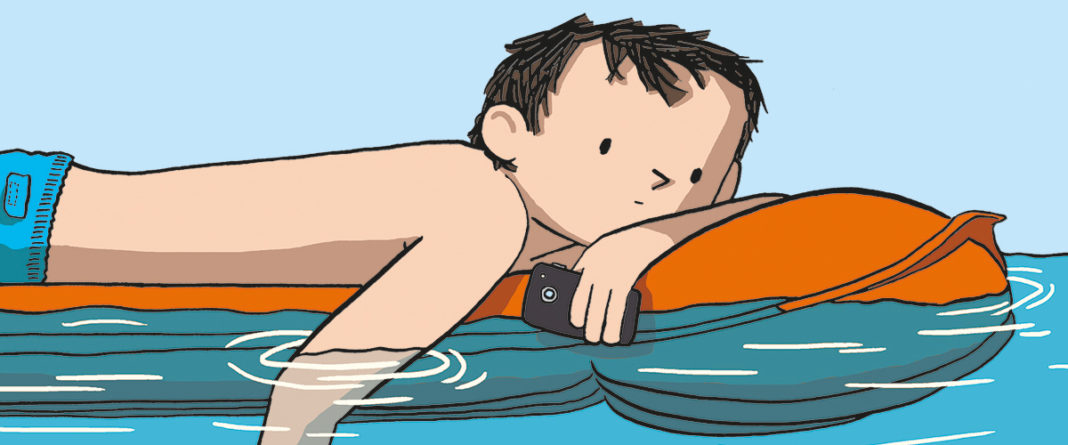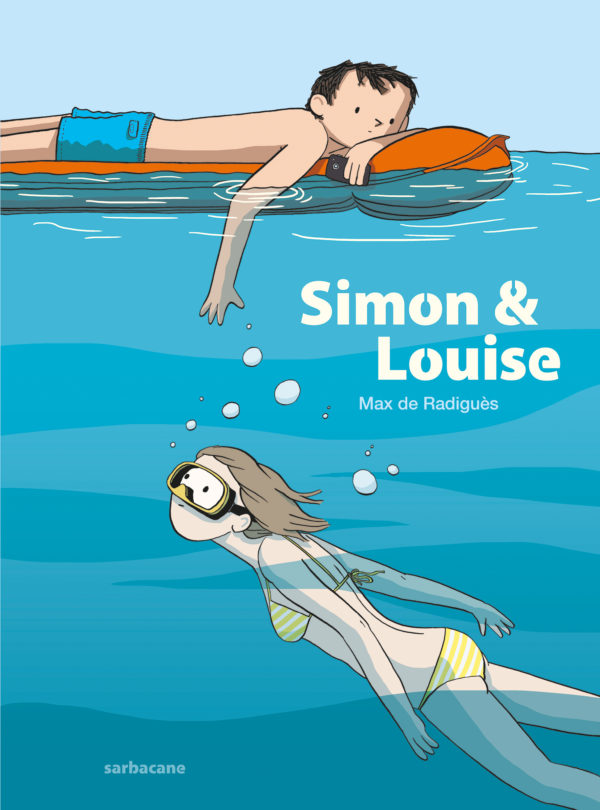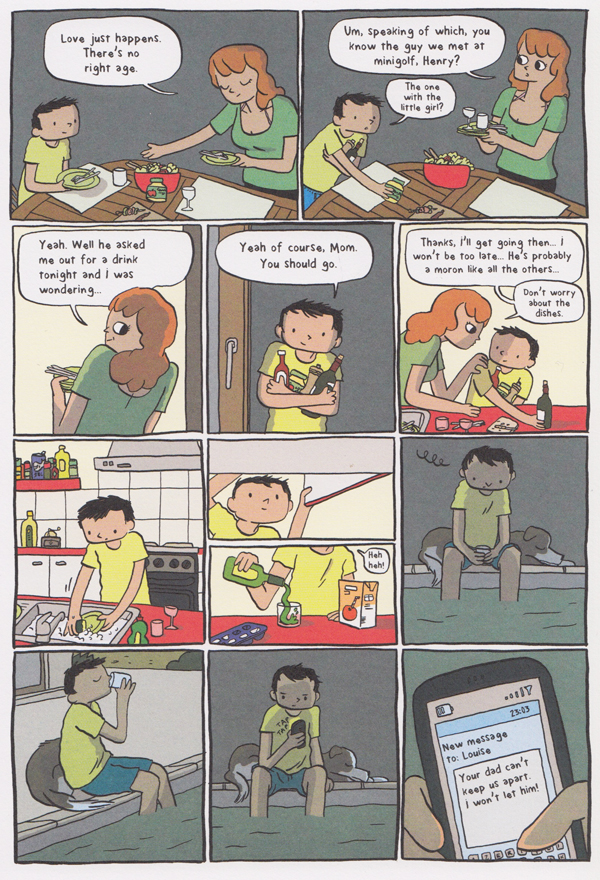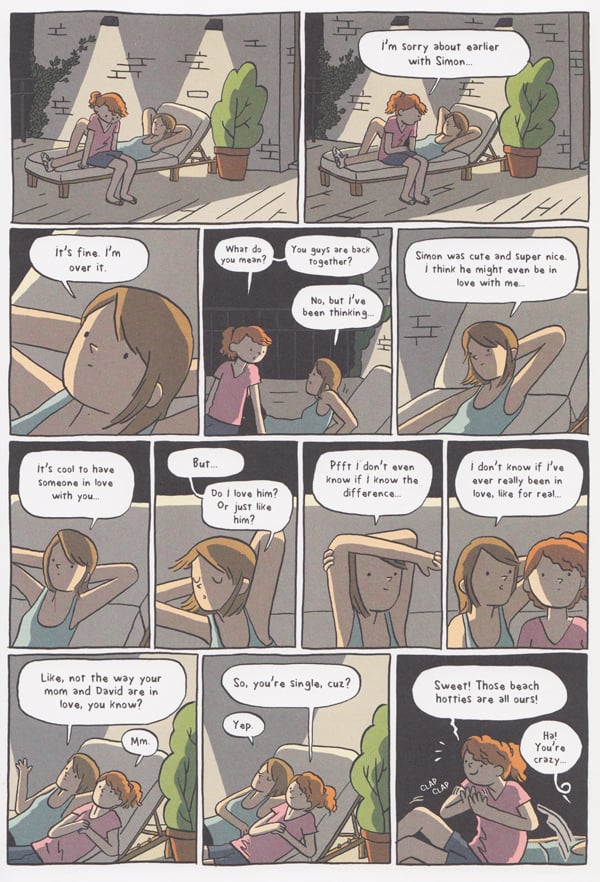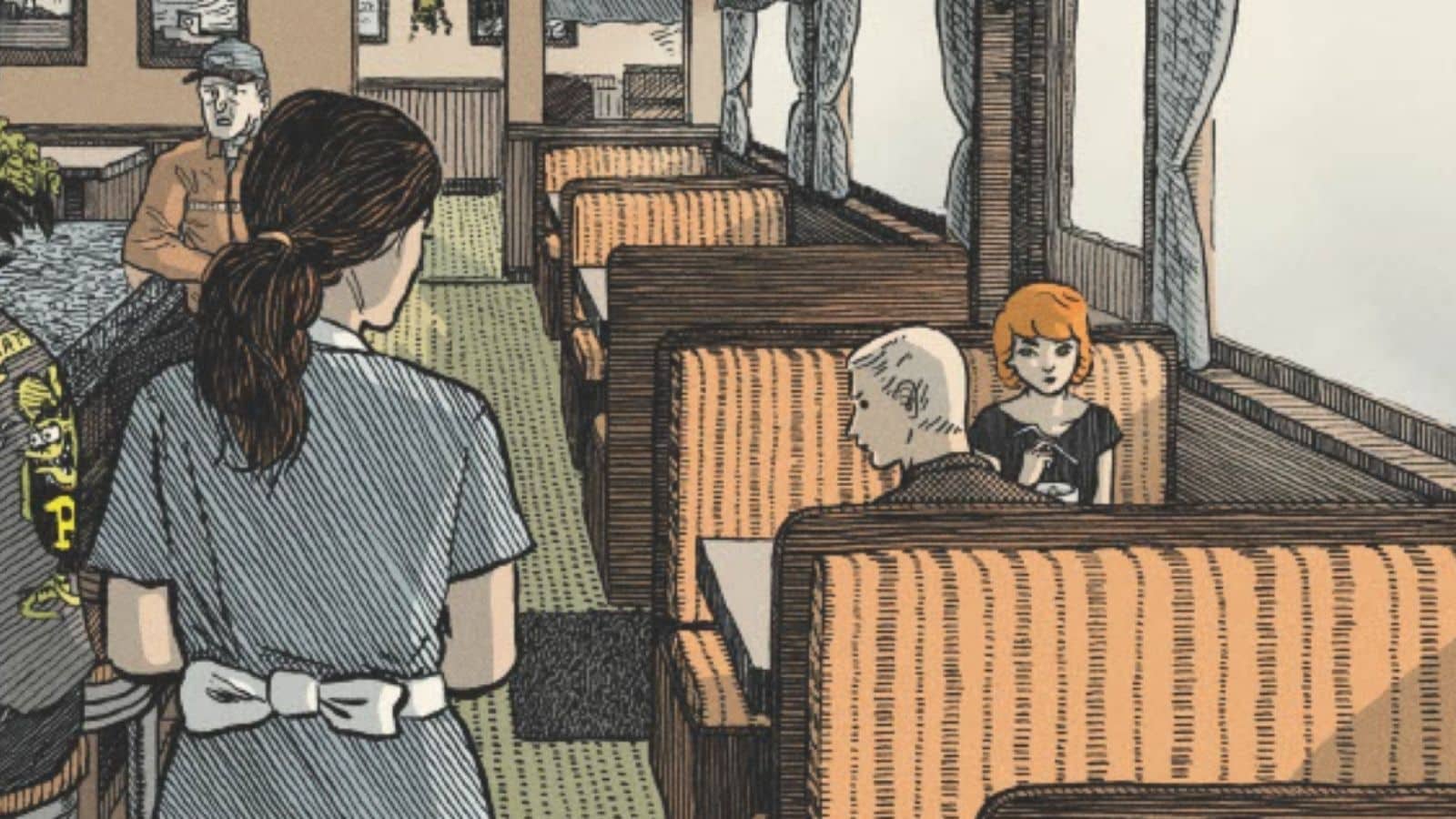Simon & Louise
By Max de Radiguès
Translation by Aleshia Jensen
Conundrum Press
Belgian cartoonist Max de Radiguès has established himself as a prime chronicler of the lives of young people. In books like Rough Age, Moose, and Bastard, he’s tackled the darker sides of their existence with an insight that never becomes too drenched in gloom, but at the same time aren’t dominated by an evasive light tone. They’re just direct, but filled with humanity. With Simon & Louise he does take a lighter tone, but the concepts behind the story point to darker hues when applied to male-female relationships. He uses the “he said/she said” conceit for a comedic treatment that makes clear the differences in experience between the genders.
It’s the end of the school year and teen-age couple Simon and Louise have to say goodbye for a little while. Louise is headed to the seaside for two months with her family, but she doesn’t go without promises by each of them to be in contact every single day she is gone. But with the distance between them, it doesn’t take long for Louise to become evasive and Simon to become paranoid.
The first part of Simon & Louise follows Simon as he journeys to interfere with Louise’s two-month vacation at Montpelier — or, more precisely, show up and proclaim his love after she changes her relationship status on Facebook. Simon’s already registered his dismay via phone and she tried to talk him down about it, blaming it on her father, but Simon won’t accept the explanation and feels compelled to make his way to the beach town to proclaim his love and prove to her father that they were meant to be.
This being a road trip, nothing goes exactly right, and the mishaps that befall Simon should probably be read as warnings from the universe that this love was not meant to be. But that’s not a conclusion Simon would come to on his own, and so his shambling journey unfolds, offering some new faces, mostly friendly, and rapidfire proof that the universe is not romantic and has no plan to elevate the spirits of an eager young guy out to prove that he is a romantic. The real shame is that the desperate focus on his girlfriend doesn’t allow Simon to truly embrace the adventure he’s on or the characters he meets while he’s in the moment. Teenage love, the ultimate distraction from more interesting things.
The second part of Simon & Louise switches perspective to reveal Louise’s experience, which as you’d expect is not exactly how Simon perceives it. She’s hanging around her cousin Manon, who’s more outgoing and spontaneous than Louies, and it’s her devilishness that sets things in motion when she changes Louise’s relationship status on Facebook as a joke. Louise isn’t happy about it at first reaction, but it quickly sinks in as a starting point for exploration. She hadn’t thought much about her relationship with Simon before, but just a symbolic split gives her the space to consider it more fully and critically.
But Manon uses the situation to meet boys and Louise is persuaded to be part of that obstensively in celebration of her newfound liberty, but mostly to keep another boy occupied while Manon concentrates on his friend. But here Louise goes on her own adventure, fueled by the threatening nature of males when they misunderstand affection, or just get forceful about it. Louise learns pretty quickly that in the culture of boys she is symbol of dominance if won over, and her allegiance slowly shifts to the third wheel of the boys’ grouping, Arthur, the target for their hostility as they lay claim to Louise and Manon to boost their own egos.
The second section featuring Louise takes the aspects of Simon’s story — the wounded male syndrome that leads him to go to absurd and pathetic lengths — and shows them at their worst. This being a book aimed at middle grade readers, it’s entirely within that context, nothing too gruesome, but the lessons are there through character actions, while at the same, in the guise of road adventures and summer vacation rom-coms.
In the end, Simon & Louise is a rather cautionary story that uses immaturity as its launch pad for examining teen relationships. In doing so, it also proposes calm in the face of calamity, and as the necessary balm to uncertainty in relationships, which are imperfect at best and surefire banana peels on the sidewalk for teenagers.


